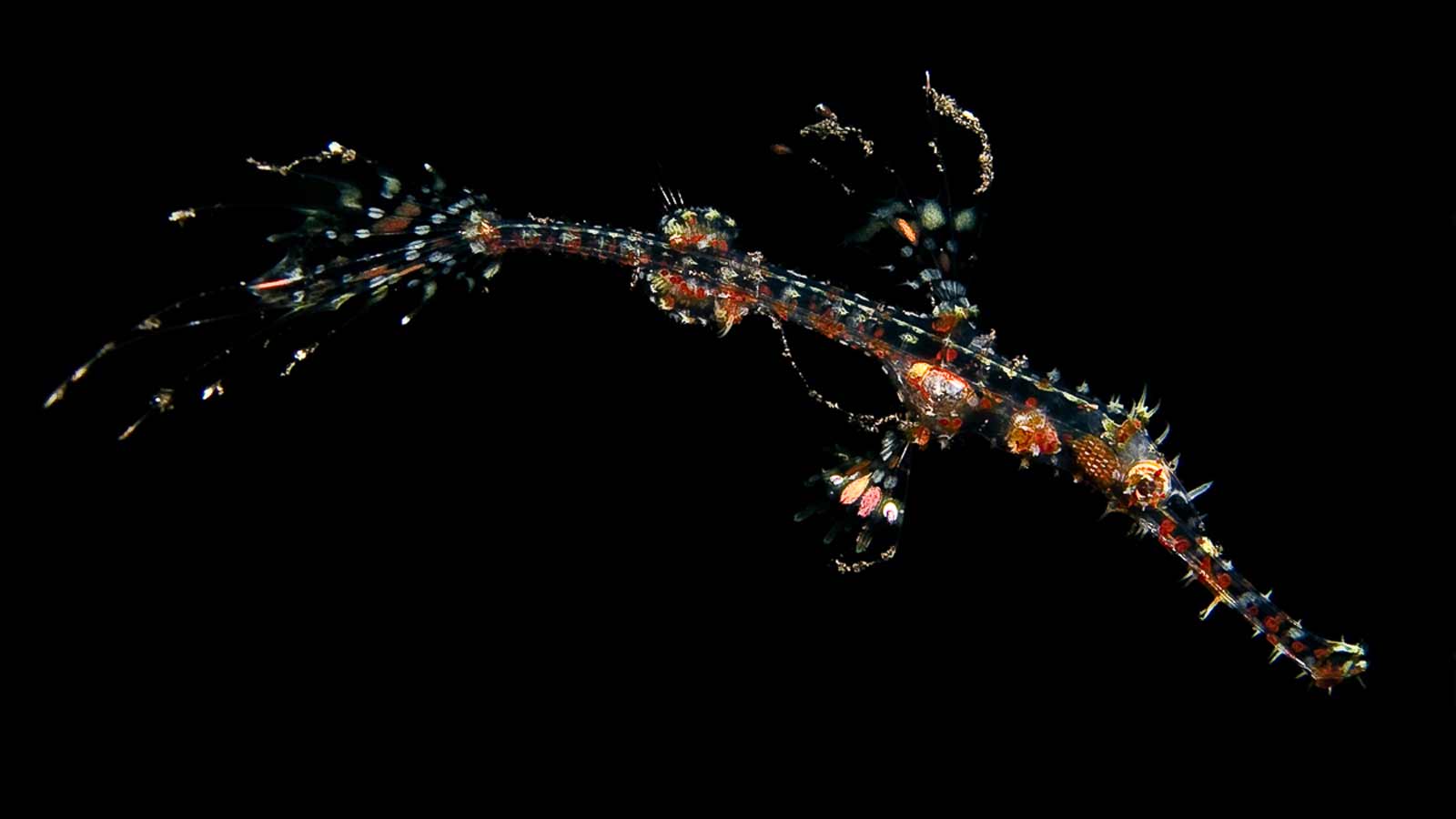
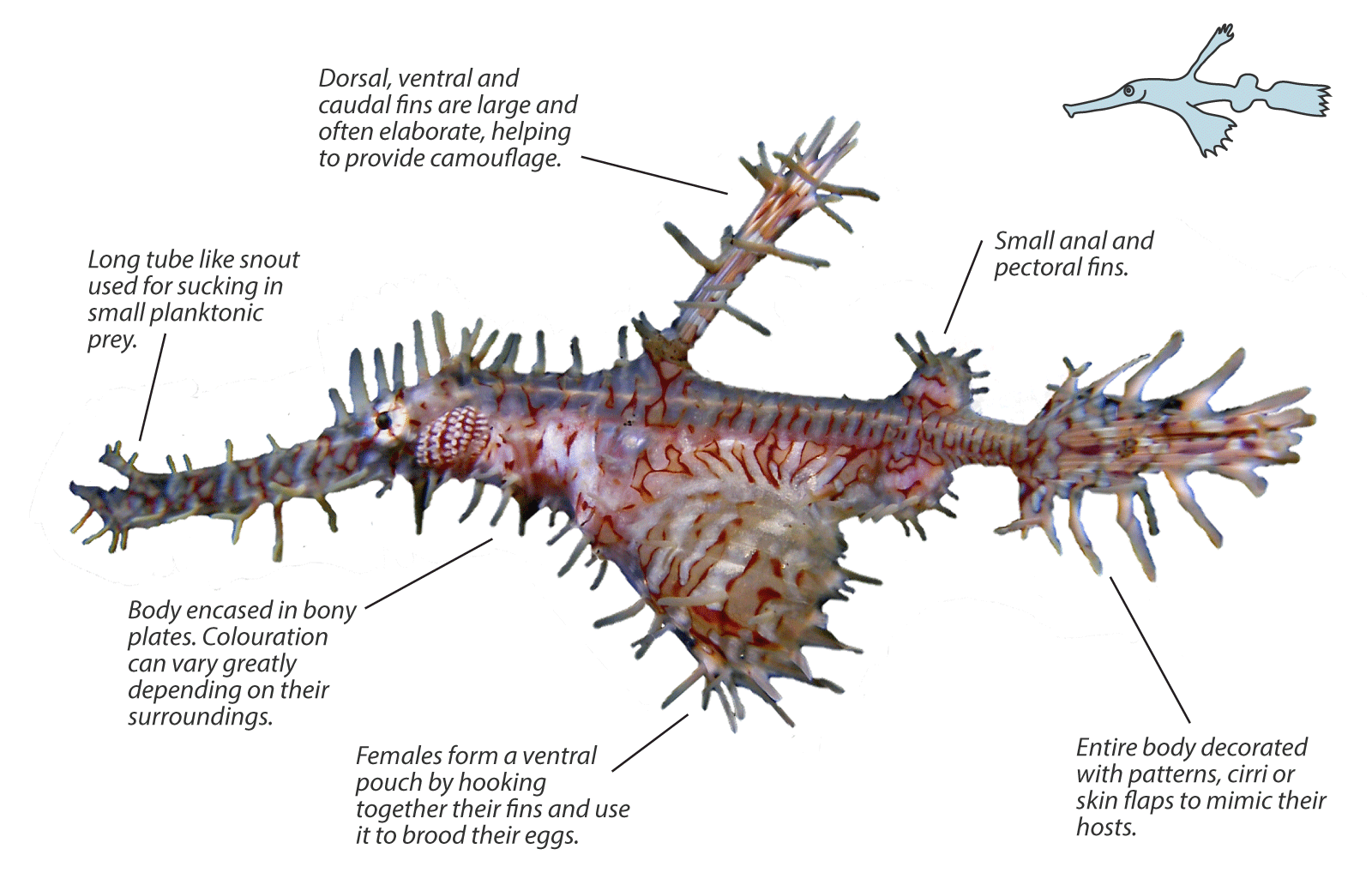
In many regions Ghost Pipefish are only seasonal visitors, settling on the reef for only a few months each year to breed.
With their incredible ability to mimic their surroundings and their tiny size, it is not surprising that these spectacular critters are seldom spotted by divers.
Usually they are seen hovering next to their matching host, perfectly camouflaged. Their bodies are small and compressed, with large, often ornate fins. They can take on a wide variety of colours including red, white and yellow, depending on their surroundings.
Ghost Pipefish are also characterised by their hard body plates and tubular snouts, similar to the closely related seahorses.
Ornate Ghost Pipefish
(Solenostomus paradoxus)
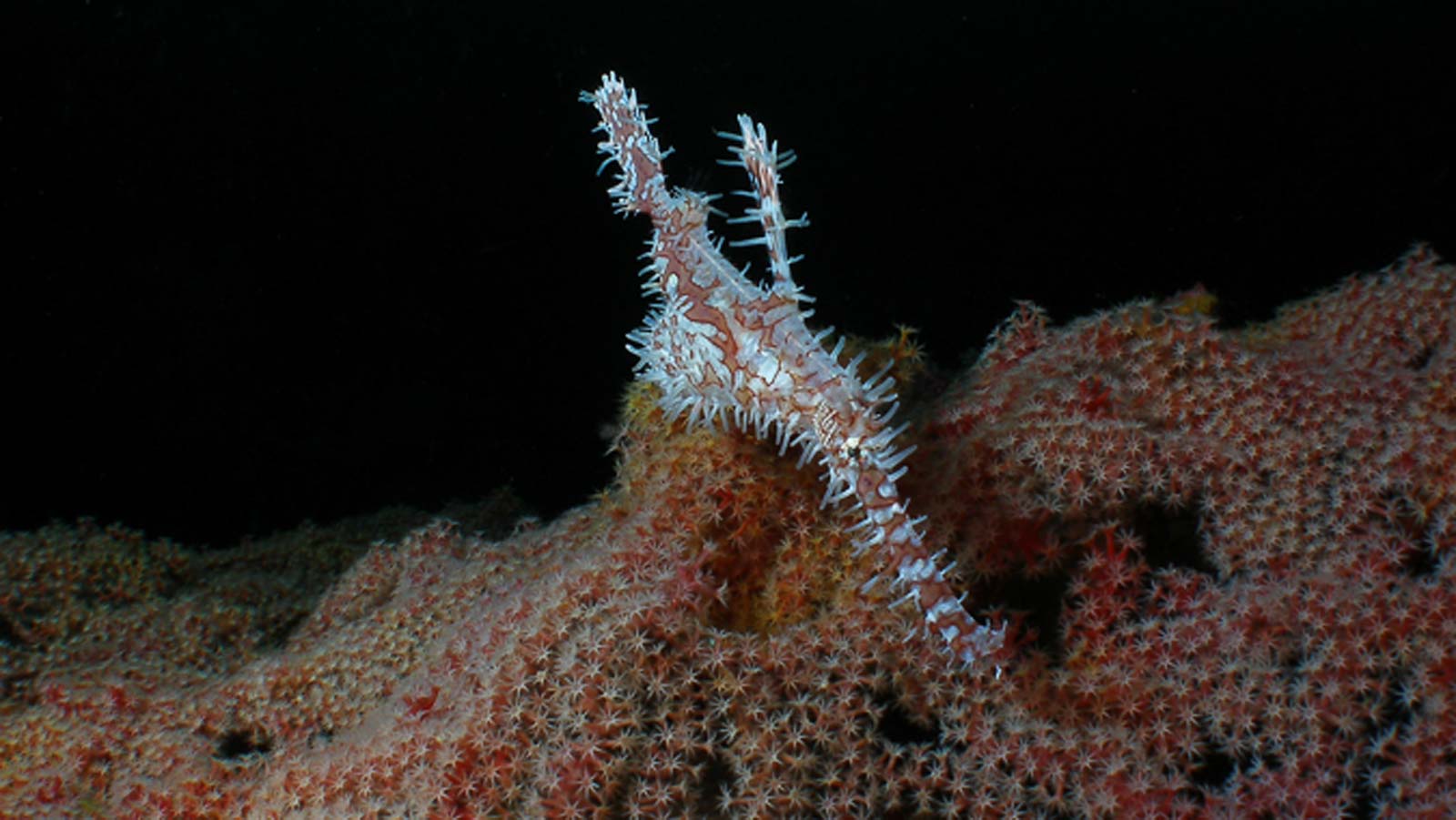
These much photographed, beautiful fish shelter near overhangs and crevices, mimicking crinoids or soft corals. They can sometimes be spotted hanging in the current to feed. They come in a wide variety of colours including, black, white, red, yellow, brown and green.
Robust Ghost Pipefish
(Solenostomus cyanopterus)
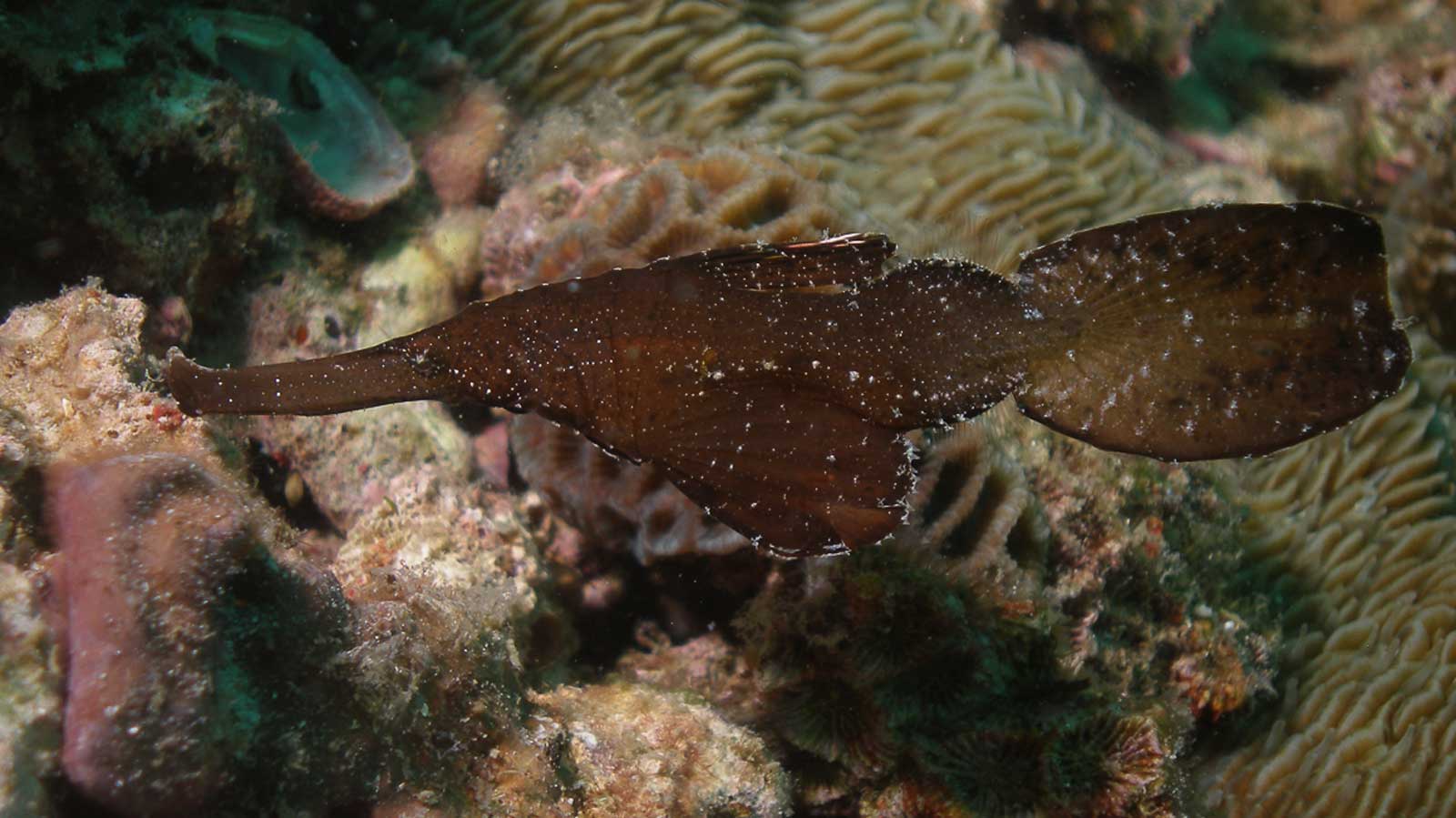
Often seen floating upside down on a sand or rubble bottom mimicking sea grass or weeds. They are usually brown, green or dark red, with darker spots and markings.
Velvet Ghost Pipefish
(Solenostomus sp)
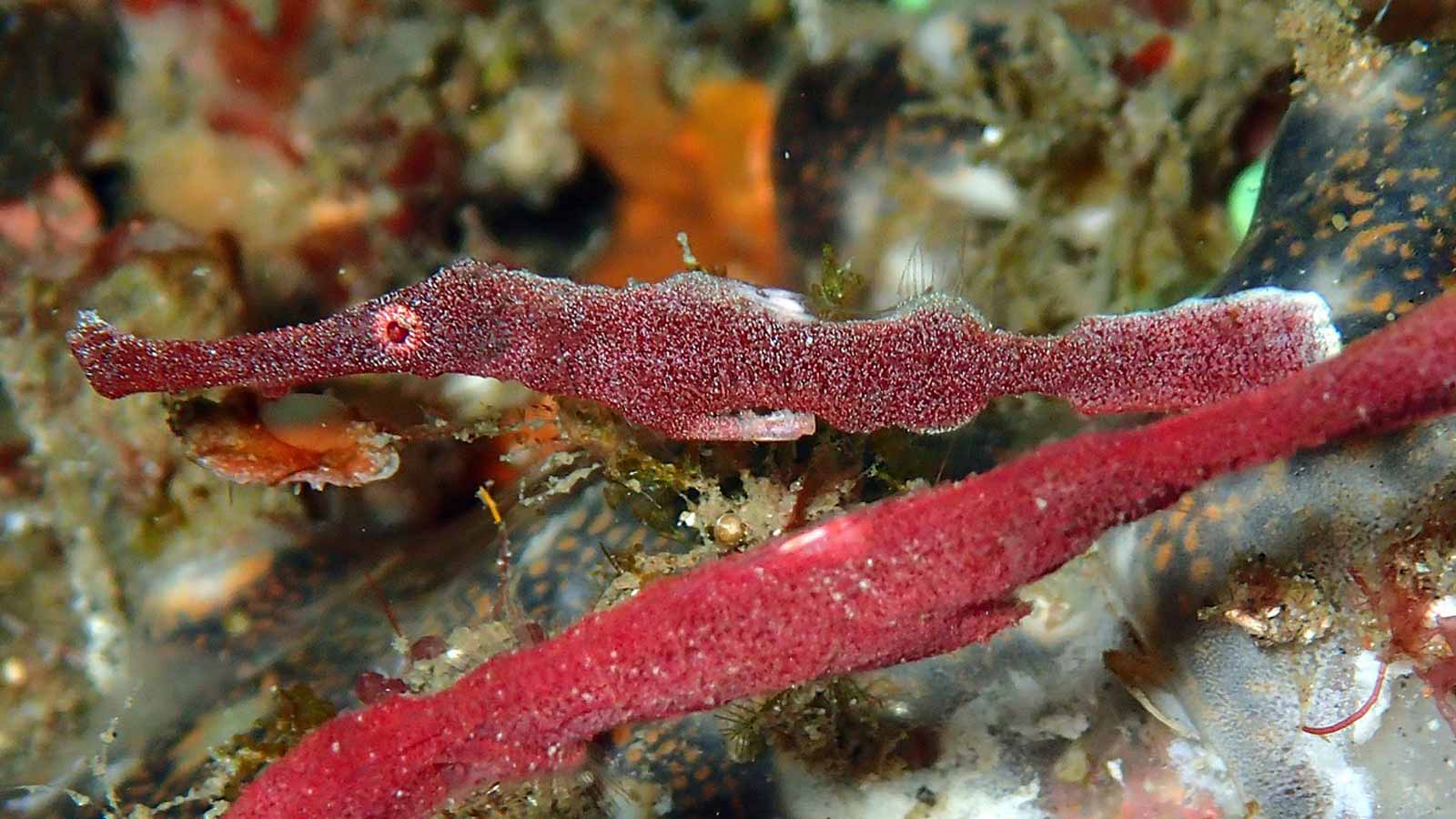
A newly identified species which may turn out to be a sub species of the Robust Ghost Pipefish. Members thought to be of this species are red or brown and small compared to Robust Ghost Pipefish, with less elaborate fins.
Ghost Pipefish are a magical find for the eagle-eyed diver. Here are some of the species to look out for.
SPECIES: >5
SIZE RANGE: 5-16 cm
DISTRIBUTION:
Global. Widespread throughout region, but hard to spot.
HABITAT:
Depending on the species, Ghost Pipefish mimic and live alongside a variety of hosts including: crinoids, soft corals, sea grass, hydroids and algae.
THREATS:
Most at threat from the aquarium trade and loss of habitat due to the overall decline of the world's reefs.
-
Dorsal, ventral and caudal fins are large and often elaborate, helping to provide camouflage.
-
Small anal and pectoral fins.
-
Long tube like snout used for sucking in small planktonic prey.
-
Body encased in bony plates. Colouration can vary greatly depending on their surroundings.
-
Females form a ventral pouch by hooking together their fins and use it to brood their eggs.
-
Entire body decorated with patterns, cirri or skin flaps to mimic their hosts.